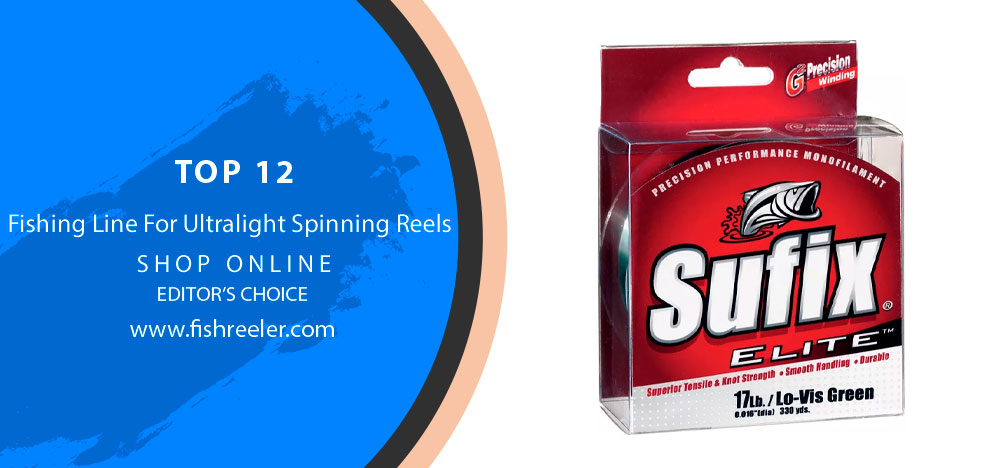
Reel in the Perfect Catch: A Comprehensive Guide to Fishing Lines for Ultralight Spinning Reels
Ultralight spinning reels are a popular choice among anglers who enjoy the thrill of finesse fishing. These reels are designed with a smaller, lighter profile, which allows for increased sensitivity and more precise control when casting and retrieving lures.
Ultralight Spinning Reels: Unleashing the Power of Finesse Fishing
The benefits of using an ultralight spinning reel are numerous, including the ability to cast smaller lures and bait with greater accuracy, making them ideal for targeting finicky fish species in clear water or highly pressured environments. Additionally, ultralight spinning reels provide a more enjoyable and exciting fight with fish, as they offer a better balance between the angler’s skill and the fish’s power.
The Critical Connection: Why Choosing the Right Fishing Line Matters
Choosing the right fishing line for your ultralight spinning reel is essential for maximizing your fishing success. The fishing line serves as a direct connection between you and the fish, impacting everything from casting distance and accuracy to sensitivity and lure action. Selecting the proper line ensures that your reel performs at its best, allowing you to effectively target your desired species and increase your chances of landing a trophy catch. Furthermore, using the right line can also prolong the life of your reel by reducing unnecessary wear and tear.
Your Ultimate Guide to Selecting the Perfect Fishing Line
The purpose of this article is to provide anglers with a comprehensive guide to help them find the best fishing line for their ultralight spinning reels. We’ll delve into the different types of fishing lines available, discuss the key factors to consider when choosing a line and offer recommendations for the best lines to use with various ultralight spinning techniques. By the end of this article, you’ll be equipped with the knowledge and insights needed to select the ideal fishing line for your ultralight spinning reel, ensuring an enjoyable and successful fishing experience.
Unlock Ultralight Spinning Success: Top 12 Fishing Lines Revealed!

When you’re picking out a fishing line for your ultralight spinning reel, there are a lot of factors to consider. With such a light setup, you need a line that can handle delicate presentations and small hooks without breaking. In this article, we’ll take a look at some of the best fishing lines for ultralight spinning reels – and provide tips on how to choose the right one for your needs. So whether you’re just getting started in ultralight fishing or you’re looking for an upgrade, read on for the top-rated lines available today!
1# PowerPro Braided Spectra Fiber Microfilament Line
Looking for a high-performance braided fishing line that has the feel of mono but with added strength and durability? Look no further than the PowerPro Spectra microfilament line. This amazing line has been enhanced with Enhanced Body Technology to deliver a compact, abrasion-resistant line that holds up against the toughest conditions.
Plus, it has minimal stretch for an ultra-sensitive feel that will help you detect even the slightest nibble. And because it has virtually no spool memory, you’ll never have to deal with pesky tangles again. So whether you’re an experienced angler or just getting started, the PowerPro Spectra microfilament line is the perfect choice for all your fishing needs.
2# Stren Original Monofilament Fishing Line
With Stren Original Monofilament Fishing Line, you’ll have everything you need to land the big one. This high-quality line has a superior knot, shock, and tensile strength, plus exceptional abrasion resistance. It’s also extremely limp and has controlled stretch for an amazing fishing experience. Give it a try today and see what you can catch!
3# Berkley NanoFil Uni-Filament Fishing Line
Berkley NanoFil Uni-Filament Fishing Line is the next generation of fishing lines. With its unified filament technology, it is the ultimate spinning reel line. NanoFil has a minimum diameter with maximum strength, making it the perfect choice for anglers looking for a high-performance line. It is also effortless to cast and has superb sensitivity, making it the perfect choice for even the most demanding anglers.
4# Spiderwire Stealth Braid Fishing Line
Introducing the newest addition to the Spiderwire line of fishing gear – Stealth Braid! This high-quality line is made with Dyneema PE microfibers and coated in fluoropolymer, making it glide through the rod guides with ease. It’s ultra-thin and strong, perfect for those who want a stealthy approach when casting. Plus, its low stretch and high sensitivity give you an edge over the competition. Get your hands on this top-of-the-line braid today and see what a difference it makes on your next fishing trip!
5# Berkley Trilene XL Smooth Casting Line Filler Spool
Gear up for a great fishing experience with Berkley Trilene XL Smooth Casting Line. This top-quality mono line is designed to provide you with amazing handling and strength, making it easy to handle any situation that arises. With its low memory and limpness, this line is sensitive to structure and strikes, letting you feel every nibble. Trustworthy and durable, this line will perform well regardless of the conditions or bait you’re using. Get ready to tackle your favourite spot with ease – equip yourself with Berkley Trilene XL Smooth Casting Line!
6# Seaguar INVIZX Fluorocarbon Fishing Line
If you’re looking for a high-quality, invisible fishing line that’s easy to cast and spooled with Level Wind Technology for smoothness, then you need Seaguar INVIZX Fluorocarbon Fishing Line. Made from 100% Seguar resins, this fishing line is UV-resistant, abrasion-resistant, and impervious to cold conditions, making it ideal for both fresh and saltwater fishing. Plus, Level Wind Technology ensures that your line is spooled smoothly and without any overstress or twist. So whether you’re a novice angler or a seasoned pro, Seaguar INVIZX Fluorocarbon Fishing Line is the perfect choice for a successful day of fishing.
7# P-Line Floroclear Fishing Line
The P-Line Floroclear Fishing Line is the best of both worlds. With its high-tech fluorocarbon coating, it is virtually invisible underwater for effective stealth presentations. The special copolymer construction gives it little memory and great castability while remaining unbelievably durable with amazing knot strength.
8# Sufix Elite Fishing Line
Sufix Elite Fishing Line is made with high-performing monofilament and advanced J7 Micro Resin Technology for superior tensile strength and knot control. With G2 Precision Winding, it virtually eliminates line memory so you can fish with uncompromising strength and control.
9# Sufix Siege Fishing Line
Sufix Siege fishing line is engineered with XV2 Technology to produce incredible strength-to-diameter capacity with smooth handling for extended casts. This superb line also has 15 times more abrasion resistance than standard monofilament, meaning you’ll be able to fish around reefs and other hazards without fear of losing your line. Additionally, Sufix Siege’s near-zero line memory ensures hassle-free casting on both spinning and baitcasting reels. So whether you’re targeting big game fish offshore or going after panfish in your local pond, this is the perfect line for anglers who demand the very best.
10# Berkley FireLine Fused Fishing Line
Berkley FireLine Fused Fishing Line is the perfect choice for anglers who demand the very best. This tough and durable line is thermally fused for superior strength, and its improved formula makes it smoother than ever and easier to cast. It’s also more colourfast and less prone to wear, tying easily and remaining unaffected by UV rays, sunlight and cold. Get the most out of your fishing with Berkley FireLine Fused Fishing Line!
11# P-Line CX Premium Fishing Line
P-Line’s CX Premium Fluorocarbon Coated Line is one of the most innovative lines available. This line is perfect for anglers looking to improve their casting distance and eliminate line problems, like spooling and memory issues. The fluorocarbon-silicone coating on this line virtually eliminates water absorption, meaning you can use this line in any condition without it affecting performance. With as much as 30% less stretch than average lines, this product gives you increased sensitivity so you can detect even the subtlest striper movements. Don’t miss out on a chance to try out this incredible line!
12# P-Line Fluorocarbon Fishing Line
P-Line Fluorocarbon Fishing Line is the perfect choice for anglers looking for a line that is virtually invisible in water. This line is constructed of 100% pure fluorocarbon crystals, ensuring unbeatable knot and breaking strength. The low stretch and minimal memory of this line enhance sensitivity, making it ideal for fishing in varied bottom terrains or for light biters. Plus, the UV resistant coating ensures that your line stays strong in all conditions.
Understanding Fishing Line Types

Monofilament: The Classic Choice
🔆Why Anglers Love Mono
Monofilament, or “mono” for short, is the most common and widely used fishing line type. Its popularity is largely due to its affordability and versatility.
Some advantages of monofilament include:
| Attribute | Monofilament Line Explanation |
|---|---|
| Easy to Handle | Generally soft and flexible, making it easy to cast, tie knots, and manage on a spinning reel. |
| Good Knot Strength | Typically holds knots well, reducing the risk of losing lures or fish. |
| Stretch | Has a certain amount of stretch, which can act as a shock absorber during hooksets and fights with fish, reducing the likelihood of breaking off or tearing the hook from the fish’s mouth. |
| Buoyancy | Floats, making it suitable for topwater lures and shallow presentations. |
🎇Mono’s Shortcomings
Despite its many advantages, monofilament also has some drawbacks:
| Attribute | Monofilament Line Explanation |
|---|---|
| Line Memory | Tends to retain its shape or coil, especially when stored on a reel for extended periods, leading to decreased casting distance and tangles. |
| UV Sensitivity | Prolonged exposure to sunlight can weaken monofilament, reducing its strength and durability. |
| Abrasion Resistance | More susceptible to abrasion from rocks, debris, or fish teeth, which can lead to line failure. |
| Water Absorption | Absorbs water, which can affect its strength, sensitivity, and overall performance. |
Fluorocarbon: The Invisible Edge
🌟The Fluoro Advantage
Fluorocarbon fishing lines have become increasingly popular in recent years, offering a number of benefits over traditional monofilament:
| Attribute | Fluorocarbon Line Explanation |
|---|---|
| Low Visibility | Nearly invisible underwater, making it harder for fish to detect, which can lead to more bites. |
| High Abrasion Resistance | More resistant to abrasions than monofilament, making it a better choice for fishing around structures or in areas with sharp rocks. |
| Low Stretch | Less stretch than mono, translating to greater sensitivity and more solid hooksets. |
| Sinks | Denser than water and sinks, making it a good choice for fishing deeper water or when using subsurface lures. |
✨Fluoro’s Drawbacks
Fluorocarbon does have a few downsides:
| Attribute | Fluorocarbon Line Explanation |
|---|---|
| Cost | Generally more expensive than monofilament. |
| Handling | Stiffer and more difficult to manage on a spinning reel compared to mono, potentially leading to reduced casting distance and increased line twists. |
| Knot Strength | More challenging to tie secure knots with, and improper knot tying can result in a significant loss of line strength. |
Braided Line: The Powerhouse Performer
🎆Braid’s Winning Features
Braided fishing lines have gained popularity among anglers due to their unique characteristics:
| Attribute | Braided Line Explanation |
|---|---|
| Strength-to-Diameter Ratio | Exceptional strength for its diameter, allowing for thinner lines with higher breaking strengths. |
| No Stretch | Virtually no stretch, providing excellent sensitivity and direct contact with the lure or bait. |
| Long Casting Distances | Thin diameter and smooth texture result in longer casts. |
| Durability | Highly resistant to UV damage and does not absorb water, ensuring consistent performance over time. |
💥Braid’s Limitations
Despite its advantages, there are some drawbacks to using braided lines:
| Attribute | Braided Line | Solution |
|---|---|---|
| Visibility | More visible underwater than monofilament or fluorocarbon, which may deter fish in clear water or pressured areas. | Use a fluorocarbon or monofilament leader to reduce visibility. |
| Knot Selection | Slippery, requiring specific knots to ensure a secure connection; some knots may be harder to tie due to slickness. | Learn and practice appropriate knots for braided lines. |
| Cost | Typically more expensive than monofilament lines. | Consider the long-term durability as an offset to initial investment. |
| Abrasion Resistance | Susceptible to abrasion and cutting when rubbed against sharp objects, such as rocks or shells. | Use a leader material with higher abrasion resistance to protect the mainline. |
Overall, understanding the advantages and disadvantages of each fishing line type is crucial when selecting the best line for your ultralight spinning reel. Each angler’s preferences and fishing situations will ultimately determine which line is the optimal choice for their ultralight spinning adventures.
Key Factors to Consider When Choosing a Fishing Line
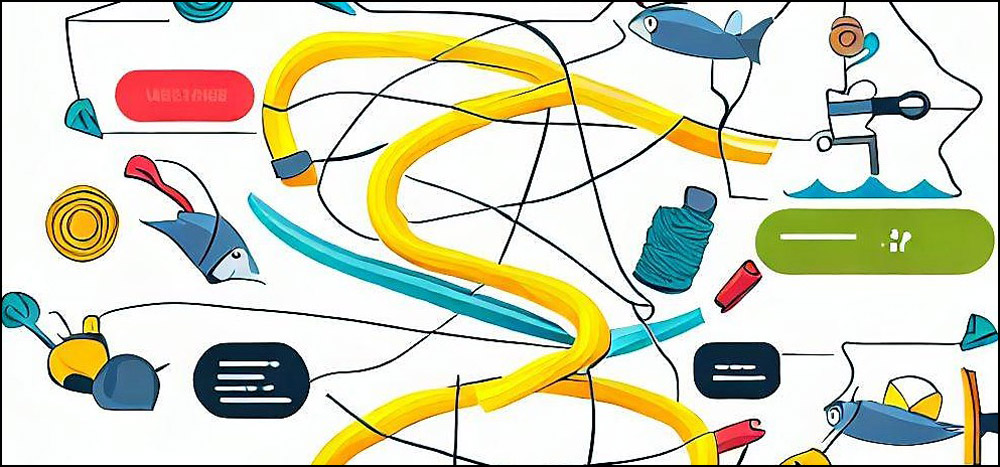
Strength in Numbers: Understanding Pound Test and Knot Strength
🎒Pound Test
The pound test, or breaking strength, of a fishing line, is a critical factor to consider when selecting the best line for your ultralight spinning reel. The pound test refers to the amount of force needed to break the line, and it is typically measured in pounds. For ultralight fishing, you’ll generally want a line with a lower pound test, such as 2 to 8 lbs., depending on the target species and fishing conditions. Lighter lines offer better finesse and casting abilities, but be aware that they may be more prone to breaking when fighting larger or stronger fish.
🐙Knot Strength
Knot strength refers to the ability of a fishing line to maintain its pound test rating when tied in a knot. Knots create weak points in the line, so choosing a line with a high knot strength is essential to prevent knot failure during casting, retrieving, or fighting fish. Monofilament lines tend to hold knots well, while fluorocarbon and braided lines may require more attention to proper knot-tying techniques to ensure optimal knot strength.
Size Matters: How Line Diameter Impacts Your Fishing Game
💩Impact on Casting Distance
Line diameter plays a significant role in casting distance and overall performance when using an ultralight spinning reel. Thinner lines create less air resistance and friction on the spool, resulting in longer casts. For ultralight fishing, a thinner line is generally preferred, as it allows you to cast smaller lures more accurately and at greater distances.
💯Line Visibility
A thinner line also has the advantage of being less visible to fish, which can be crucial when targeting wary or pressured fish species. However, thinner lines may be more susceptible to abrasion and damage, so it’s essential to strike a balance between visibility and durability based on your specific fishing conditions and target species.
Feel the Bite: Sensitivity and Lure Action in Fishing Lines
🐞Detecting Bites
Sensitivity is a vital factor to consider when selecting a fishing line for ultralight spinning reels. A more sensitive line allows you to feel subtle bites and detect the movement of your lure, leading to more successful hooksets and improved catch rates. Lines with little to no stretch, such as fluorocarbon and braided lines, offer increased sensitivity compared to monofilament.
🌸Lure Action
The sensitivity of your line can also impact the action of your lure. A line with less stretch allows for better control and more precise lure action, enabling you to better mimic the natural movements of prey and entice fish to bite.
Tough Stuff: Evaluating Abrasion Resistance
Fishing lines with high abrasion resistance are more durable and less likely to be damaged by rocks, debris, or sharp fish teeth. Fluorocarbon lines generally offer the best abrasion resistance, while monofilament lines are more susceptible to abrasion. Braided lines, despite their high strength-to-diameter ratio, can be more prone to cutting when rubbed against sharp objects. Consider the environment you’ll be fishing in and choose a line with suitable abrasion resistance.
Memory Lane: Handling and Line Management
Memory refers to a fishing line’s tendency to retain its shape or coil when stored on a reel. High-memory lines can lead to reduced casting distance, tangles, and line twists. Monofilament lines are known for having more memory than fluorocarbon or braided lines.
Handling is also an essential factor to consider, as some lines can be more difficult to manage on a spinning reel due to their stiffness or slickness. Monofilament is generally easier to handle, while fluorocarbon and braided lines may require more care and attention during spooling, casting, and knot tying.
Matching Fishing Line to Ultralight Spinning Reel Techniques
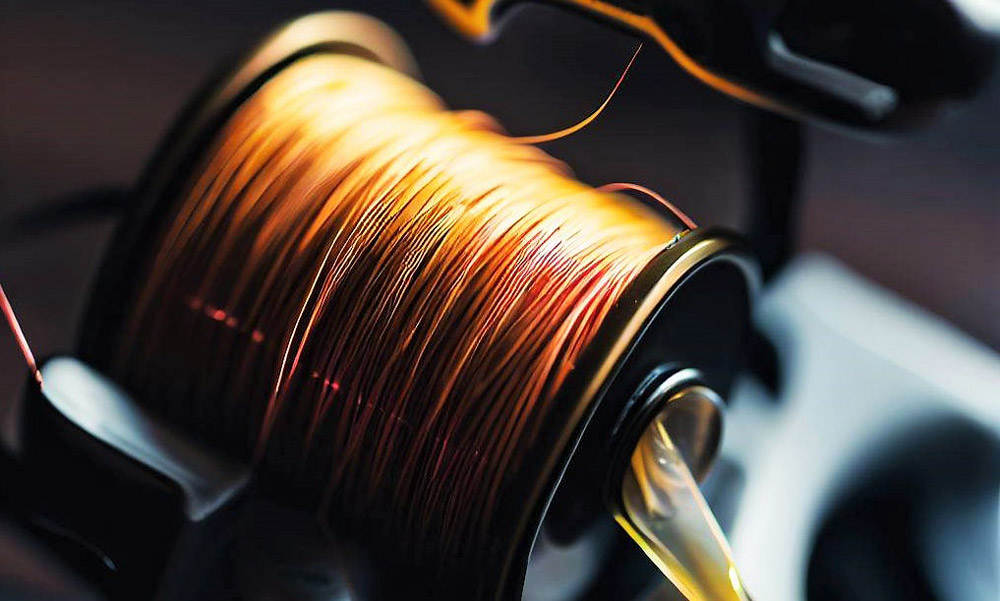
Perfect Pairings: Finesse Presentations and Fishing Lines
🌊Drop Shot
The drop shot technique is a popular finesse presentation that involves suspending a soft plastic lure above the bottom, with a weight attached below the hook. The Fluorocarbon line is an excellent choice for drop shotting due to its low visibility, sensitivity, and abrasion resistance. A light braided line with a fluorocarbon leader can also be a great option for increased sensitivity and casting distance.
🌊Ned Rig
The Ned rig is a finesse technique that utilizes a small, buoyant soft plastic bait on a light jig head. For this presentation, a thin-diameter monofilament or fluorocarbon line is recommended, as it provides a good balance between visibility, sensitivity, and casting performance. A light braided line with a fluorocarbon leader can also work well, especially in situations where increased sensitivity and casting distance are needed.
🌊Wacky Rig
The wacky rig involves hooking a soft plastic stick bait through the middle, allowing it to move freely and create an enticing action. Monofilament is a popular choice for wacky rigging due to its buoyancy, which helps keep the bait in the strike zone longer. Fluorocarbon can also be effective, particularly in clear water conditions where low visibility is crucial. A braided line with a fluorocarbon leader can be a good option for increased sensitivity and casting distance.
Casting Light: Matching Line for Light Lure Applications
For light lure casting with ultralight spinning reels, a thin diameter line is essential for maximizing casting distance and accuracy. A braided line is an excellent option, as its thin diameter and low stretch properties provide long casts and great sensitivity. Pairing a braided line with a fluorocarbon or monofilament leader can help reduce visibility and improve abrasion resistance.
Panfish and Trout Tactics: Finding Your Ideal Line
When targeting panfish and trout, low visibility and finesse are often crucial. A light monofilament or fluorocarbon line is well-suited for these situations, providing a good balance of visibility, sensitivity, and handling. In clear water or heavily pressured areas, fluorocarbon may offer an edge due to its near invisibility. A light braided line with a fluorocarbon leader can also be effective, especially when increased sensitivity and casting distance are desired.
Conquering the Salt: Ultralight Spinning in Saltwater
Ultralight spinning reels can also be used for saltwater applications, targeting species such as inshore sea trout, redfish, or smaller snappers. In these situations, abrasion resistance and durability become more important. A light braided line with a fluorocarbon leader is often the best choice, as it offers a high strength-to-diameter ratio, excellent abrasion resistance, and the added benefit of a low-visibility leader. In situations where line stretch is not a concern, monofilament can also be a viable option, particularly for topwater presentations.
Top Fishing Line Recommendations for Ultralight Spinning Reels
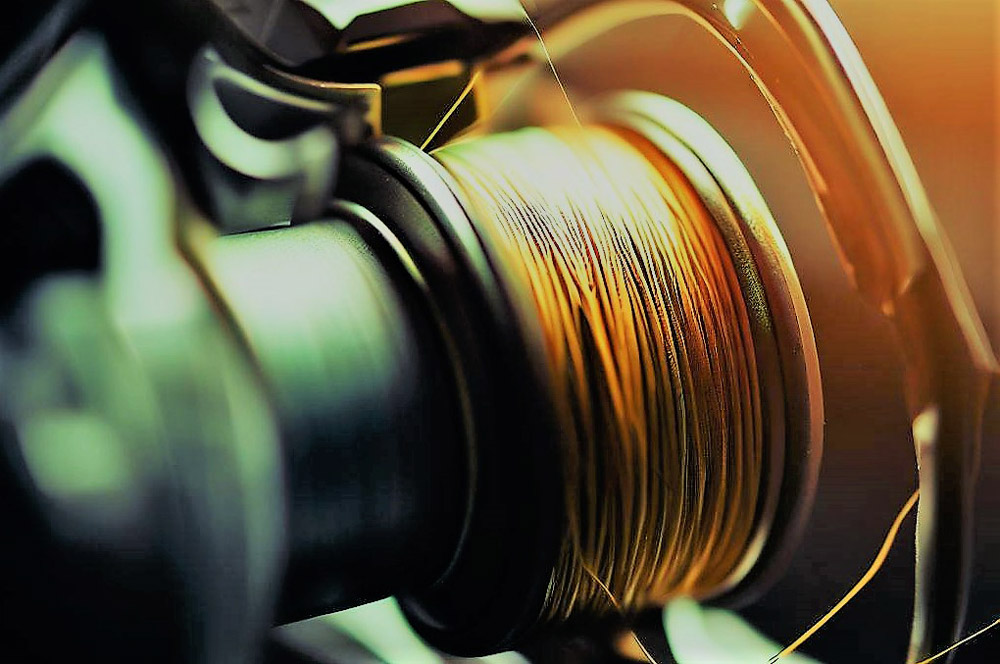
Mono Marvels: The Best Monofilament Lines for Ultralight Spinning
🐕🦺Berkley Trilene XL Smooth Casting
This monofilament line is highly regarded for its smooth casting, low memory, and excellent knot strength. It’s an ideal choice for ultralight spinning reels, providing a good balance of durability, handling, and sensitivity.
Stren Original is a popular choice among anglers due to its combination of strength, sensitivity, and abrasion resistance. Its low memory and easy handling make it an excellent option for ultralight spinning reels.
Sufix Elite is known for its superior strength and sensitivity, as well as its excellent abrasion resistance. With minimal line memory and smooth casting performance, it’s a top choice for ultralight spinning applications.
Fluoro Fan Favorites: Top Fluorocarbon Lines to Boost Your Game
InvizX is a high-quality fluorocarbon line with excellent abrasion resistance, low visibility, and impressive knot strength. Its soft and supple nature makes it a great choice for ultralight spinning reels, as well as for use as a leader material.
Super FC Sniper is a versatile fluorocarbon line that offers exceptional strength, sensitivity, and abrasion resistance. It is low memory and smooth casting performance make it a top choice for ultralight spinning applications.
Floroclear is a hybrid fluorocarbon line that combines the benefits of fluorocarbon with the manageability of monofilament. It offers low visibility, good knot strength, and excellent handling for ultralight spinning reels.
Braid Brilliance: The Ultimate Braided Lines for Ultralight Spinning
This braided line is known for its smooth and quiet casting, as well as its excellent strength-to-diameter ratio. With minimal stretch and exceptional sensitivity, it’s an ideal choice for ultralight spinning reels when paired with a suitable leader.
The Sufix 832 is a highly regarded braided line, offering excellent strength, abrasion resistance, and sensitivity. Its thin diameter and smooth casting make it a top choice for ultralight spinning applications.
💠Spiderwire Ultracast Invisi-Braid
The Ultracast Invisi-Braid from Spiderwire combines low visibility with impressive strength and casting performance. It is thin diameter and smooth finish makes it a popular option for ultralight spinning reels.
Expert Angler’s Choice: Tried and True Fishing Line Picks
While the above recommendations are all excellent choices, personal preference, and fishing conditions will ultimately dictate the best line for each angler. Experimenting with different line types and brands can help you find the perfect match for your ultralight spinning reel and fishing techniques. Consulting with fellow anglers and local fishing experts can also provide valuable insights and recommendations based on their experiences and knowledge of specific fishing conditions.
Pro Tips for Maximizing Performance with Your Ultralight Spinning Reel
Spool Like a Pro: Expert Line Spooling Techniques
- Line Orientation: When spooling your ultralight spinning reel, ensure that the line comes off the filler spool in the same direction as it goes onto the reel spool. This helps reduce line twists and improve overall performance.
- Tension: Maintain consistent tension on the line as you spool it onto the reel. This prevents loose coils, which can lead to tangles and reduced casting distance.
- Filling the Spool: Fill the spool to the appropriate level, typically about 1/8 inch from the rim. Overfilling or underfilling the spool can negatively impact casting performance and line management.
Balancing Act: Creating the Perfect Rod, Reel, and Line Combo
- Rod and Reel Compatibility: Pair your ultralight spinning reel with a suitable rod, typically a light or ultralight power rod with a fast or extra-fast action. This ensures optimal sensitivity, casting performance, and fish-fighting capabilities.
- Line Compatibility: Choose a line with the appropriate pound test and diameter for your target species, fishing conditions, and reel capacity. This helps maximize casting distance, sensitivity, and overall performance.
Knot Your Average Tips: Mastering Knot Selection and Tying
- Knot Choice: Choose a knot that is appropriate for your line type and fishing application. For example, the Palomar knot works well with braided lines, while the Improved Clinch knot is a reliable choice for monofilament and fluorocarbon lines.
- Tying Technique: Ensure that your knots are tied correctly and securely. Lubricate the knot with saliva or water before cinching it down to reduce friction and maintain knot strength. Trim the tag end close to prevent it from snagging on debris or affecting lure action.
Line TLC: Proper Maintenance and Care for Longer-Lasting Performance
- Periodic Inspection: Regularly inspect your line for signs of damage, such as fraying, nicks, or abrasion. Replace damaged lines promptly to avoid unexpected break-offs.
- Line Storage: Store your fishing gear in a cool, dry place away from direct sunlight to prolong the life of your fishing line. Prolonged exposure to heat or sunlight can weaken monofilament and fluorocarbon lines.
- Line Replacement: Replace your fishing line periodically, as it can weaken over time due to use, exposure to the elements, and general wear and tear. Regular line replacement ensures optimal performance and reduces the risk of line failure during crucial moments.
By following these pro tips, you can maximize the performance of your ultralight spinning reel and enjoy more successful and enjoyable fishing experiences.
FAQ: Perfect Ultralight Fishing Line
Conclusion: Master the Art of Ultralight Spinning Reels
In this article, we’ve explored the different types of fishing lines suitable for ultralight spinning reels, including monofilament, fluorocarbon, and braided lines.
Putting It All Together: Your Path to Fishing Line Mastery
We’ve also discussed the key factors to consider when choosing a fishing line, such as line strength, diameter, sensitivity, abrasion resistance, and handling. Additionally, we’ve provided recommendations for top fishing lines in each category, as well as expert tips for maximizing the performance of your ultralight spinning reel setup.
Experiment to Excel: Finding the Perfect Line for Your Ultralight Reel
While the information and recommendations provided in this article serve as a solid starting point, it’s essential to remember that personal preferences and specific fishing conditions will ultimately dictate the best fishing line for your ultralight spinning reel. We encourage you to experiment with different line types, brands, and setups to find the perfect combination that suits your needs and maximizes your fishing success.
Tight Lines and Trophy Catches: Wishing You Fishing Success!
In conclusion, choosing the right fishing line for your ultralight spinning reel is a crucial aspect of ensuring a successful and enjoyable fishing experience. By considering the key factors discussed in this article and taking the time to test various lines and setups, you’ll be well on your way to finding the ideal fishing line for your ultralight spinning reel. We wish you the best of luck on your fishing adventures and hope that the information provided here will help you reel in the perfect catch!
We hope you found the information in this article helpful. Fishing Line For Ultralight Spinning Reels can be a tough product to shop for, but after reading our buyer’s guide and reviews of top-rated fishing lines, we’re confident that you’ll find what you’re looking for.

I live in Tenerife (Canary Islands) for the last 10+ years and share my daily fishing experiences on my website. Many years of personal experience as a fisherman and the vast experience of my friends allow me to write professionally on any fishing topics (from choosing a flashlight and equipment to deep-sea fishing).
All of my advice is based on practical real-world experience and will be useful to both novice anglers and professionals. Read more about the author.
Affiliate Disclosure: FishReeler.org sometimes gets paid for listings, through sponsors or affiliate programs like Amazon, Ebay, Cabelas, Bass Pro Shop, Shimano, Daiwa, Rapala, Renn, Okuma, KastKing, etс. Clicking a link helps keep FishReeler.org free, at no extra cost to you!
About the author: Each article is verified by the fishing expert Sergio Smirnoff. The articles are written by professional and amateur fishermen with 20+ years of fishing experience.
Note: The views and opinions expressed in this article are those of the authors and do not necessarily reflect the official policy or position of any agency. The articles are for informational purposes only, share your opinions in the comments and join the fishing discussions, let's share our fishing experiences together!

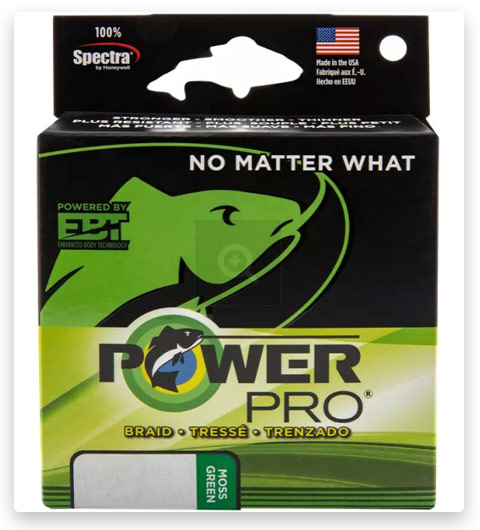
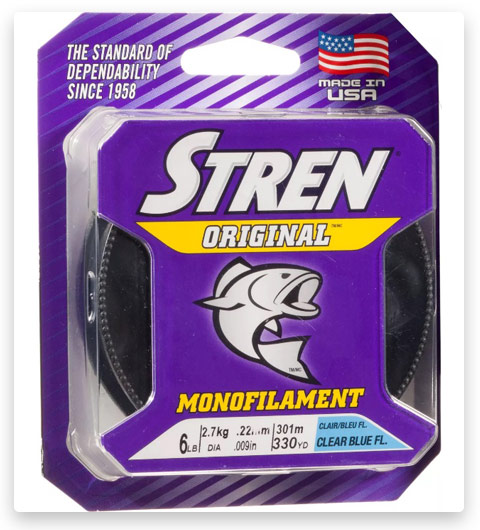
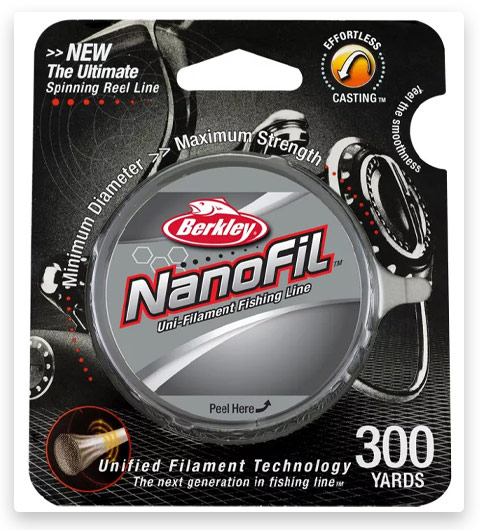
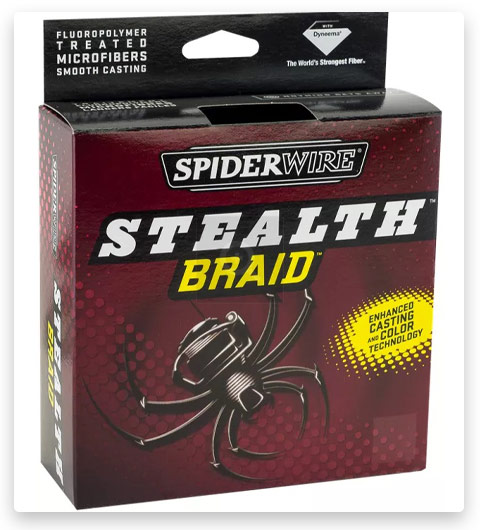
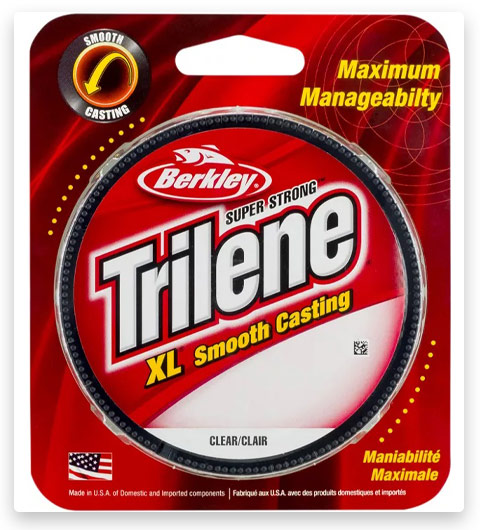

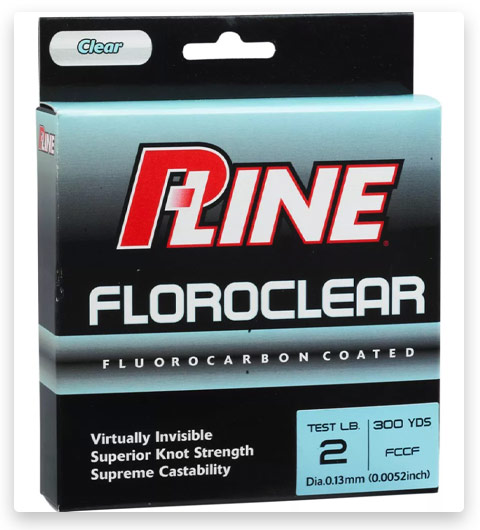


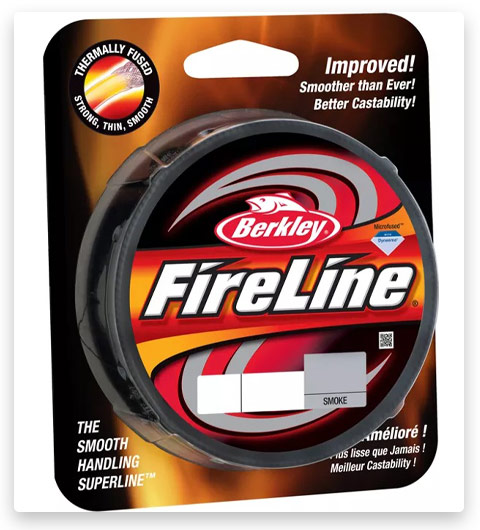
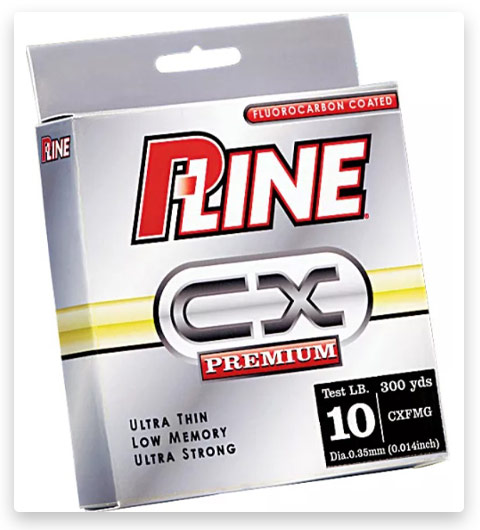
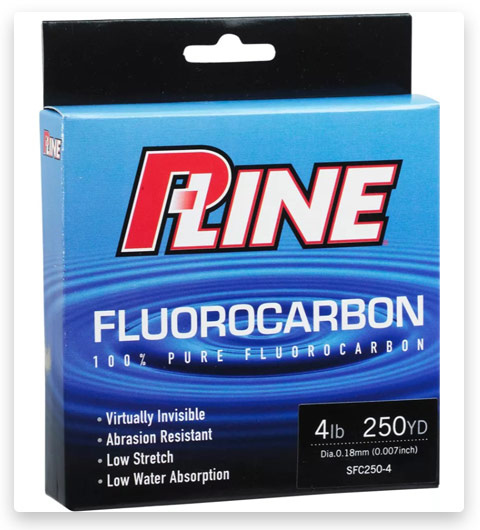

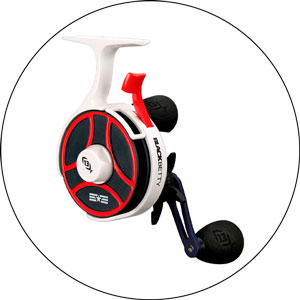
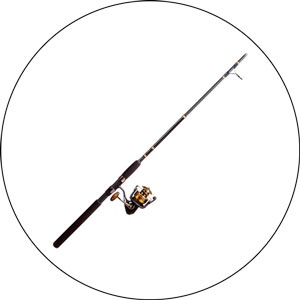
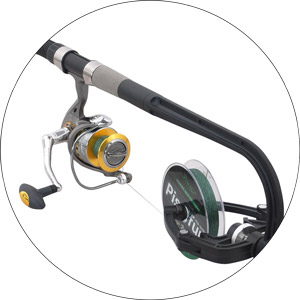
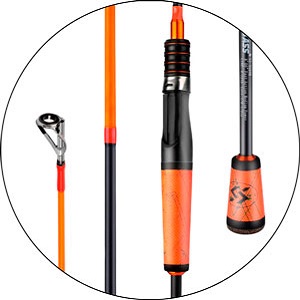
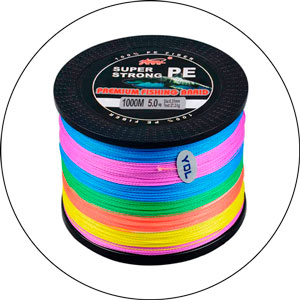
I’ve been struggling to find the perfect fishing line for my ultralight spinning reel, and this article has been a game-changer. The pro tips section was particularly helpful in ensuring that I’m maximizing the performance of my setup. Thank you for sharing your knowledge!
I’ve been using the braided line on my ultralight spinning rods for quite some time now, typically opting for Cabela’s house brand with a 4 lb mono equivalent for size. When I need a stealthier approach, I tie on a fluorocarbon leader. I’ve been a fan of this setup since the early 90s when braid was mostly limited to Spiderwire.
The braided line is perfect for ultralight lures (in fact, I use it on all of my rods) because it provides a much higher line break rating, which is essential when fishing in weedy areas or around log and brush laydowns. I’ve even straightened hooks out with the older Spiderwire that was rated as 4 lbs mono size but had a 20 lbs test strength!
Excellent breakdown of the top fishing line recommendations. I tried one of the expert picks, and it’s made a world of difference in my casting distance and sensitivity. Looking forward to more informative articles like this!
I recommend sticking with the 4 lb. test. I’m personally not a huge fan of braid, but it might work well for you. I miss using Silver Thread, as it was a great line. Currently, I’m using Trilene XL and had a good experience today fishing with a Sedona 1000, with no issues at all.
I’ve also tried Yo-Zuri, which is a co-polymer line, and found it to be effective. As for soaking the line or spool, I haven’t done it, so I can’t comment. However, I’ve used Real Magic for years, and while it may not be a game-changer, it certainly doesn’t hurt.
Make sure the line comes off the spool in the same direction it goes onto your reel and avoid overfilling your spool. Also, to reduce twists, it’s helpful to manually close the bail after each cast.
In my experience, smaller ultralight reel spools tend to have more twists and knots than larger reels/spools.
This article is a treasure trove of information for ultralight anglers. I appreciate the detailed explanations, especially on key factors to consider when choosing a fishing line. I can’t wait to test out some of the recommended lines on my next fishing trip!
I’ve found Sufix Elite mono to be quite good, especially their high-vis yellow variant which is great for those with older eyes. I’ve also tried the Yo-Zuri braid in blue, which has an impressively small diameter. I’m excited to test out some Sunline Siglon F in fluorescent pink 2lb test when it arrives.
If you happen to be in a store, take a look at a spool of Sufix and notice how straight it is wound onto the spool. I believe this makes a difference, as it doesn’t seem to have as much memory as some other lines. Trilene XL is another solid option to consider.
Thanks for this comprehensive guide on fishing lines for ultralight spinning reels. The section on matching the line to different techniques has significantly improved my finesse fishing game!
I can’t personally recommend whether to use braid or mono for an ultralight spinning reel. However, when it comes to bass fishing rigs (spinning and bait casting), I’ve learned that braid has its pros and cons. Its lack of stretch allows for better bite detection and stronger lines for a given diameter.
On the other hand, the absence of stretch can make it easier for fish to tear loose if you rush them. I prefer mono for crankbait setups because it provides a softer rod/line combo that helps prevent fish from pulling out treble hooks. Braid works well for other purposes, like throwing lures with large hooks.
As we know, mono tends to tangle on spinning reels, especially when old. Braid tangles less but still get “wind knots.” These knots are usually smaller and easier to untangle than mono snarls, but if pulled too tight, they become impossible to fix. When using braid on a spinning reel, you’ll likely need a mono or fluorocarbon leader for invisibility.
Mono is easier to tie knots with, while fluorocarbon requires special knots to prevent line weakening. It’s best to learn these knots from YouTube tutorials – https://youtu.be/3I905PXIYww. You’ll need one for tying fluorocarbon to the braid (I suggest the Alberto knot) and another for attaching hooks and lures.
Great article! I found the comparison between monofilament, fluorocarbon, and braided lines extremely helpful in making an informed decision for my ultralight setup. Keep up the good work!
I frequently fish with jigs and find it helpful to see my line. The best line I’ve come across for my needs is Stren Original Clear Blue. Over the years, I’ve tried various new lines as they hit the market, but I always find myself returning to Stren. I’ve used it in crystal-clear water alongside fluorocarbon lines and never felt that fluorocarbon performed any better. If you’re looking to achieve incredible casting distance with light lures (1/32 and lower), I recommend giving Berkley NanoFil a try.
I recently got an ultralight spinning reel and I’m looking to put a new line on it. The max LB rating is 6lb. I’m considering using a Power Pro Braid 10LB (6lb dia) or something similar, as it would allow me to use a stronger line while still maintaining the LB rating. I’m curious to know what others might be using for their ultralight reels.
I recently started using the Sufix 6LB Neon Orange Mono on my ultralight reel, and I’ve found it to work really well. I was initially concerned that the bright color might spook the fish, but I’ve had no issues getting bites. I picked it up on sale, and I’ve been pleasantly surprised by its performance.
I’ve been a loyal user of Stren 4lb high-vis line for my trout and crappie fishing adventures for years now. While it’s not completely knot-free, I’ve been quite satisfied with its performance. Just a quick tip: don’t overfill the spool, or you might experience line flying off when casting lighter jigs.
I personally stick with Trilene XL in clear for panfish. I do have a couple of rods for free-line jigging with 1-pound Crystalline, but I typically use them when crappies head to deeper waters to escape the heat. Sensation and P-lines are also great choices for their suppleness and tangle-free properties.
Just a heads-up: if you’re planning to use a float, avoid fluorocarbons since they absorb water and sink. It’s not a pleasant experience with a float.
For those who are committed to using braids, give Crystal a try. It offers smooth and long casts. Also, consider closing the bail by hand instead of turning the crank to prevent line twists and tangles.
I’ve had great success using 6# Stren on both my 11′ Crappie rod reels and my 3′ bream rods for years. The 6# line can cast 1/16-1/8 oz jigs far enough for my needs, whether I’m fishing the Arkansas River, backwaters, or jetties. Since I often catch 2# bream, 3# crappie, and sometimes even larger fish like drum, cats, and bass, the 6# line is essential. Despooling during casting can be due to overfilling or casting light lures into the wind. If you’re not sure how many lines to put on your reel, try leaving 1/8″ of the free spool and avoid overfilling.